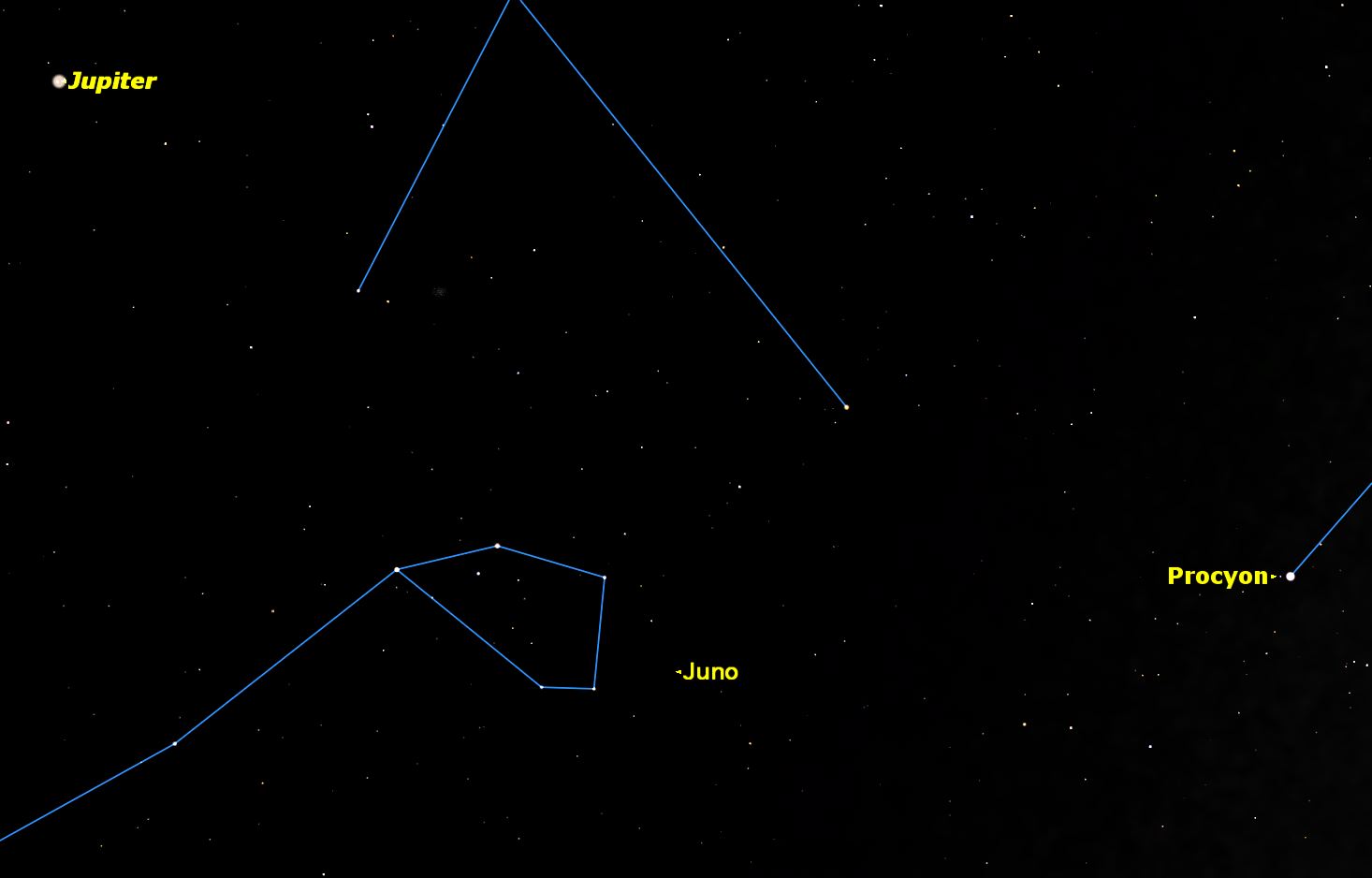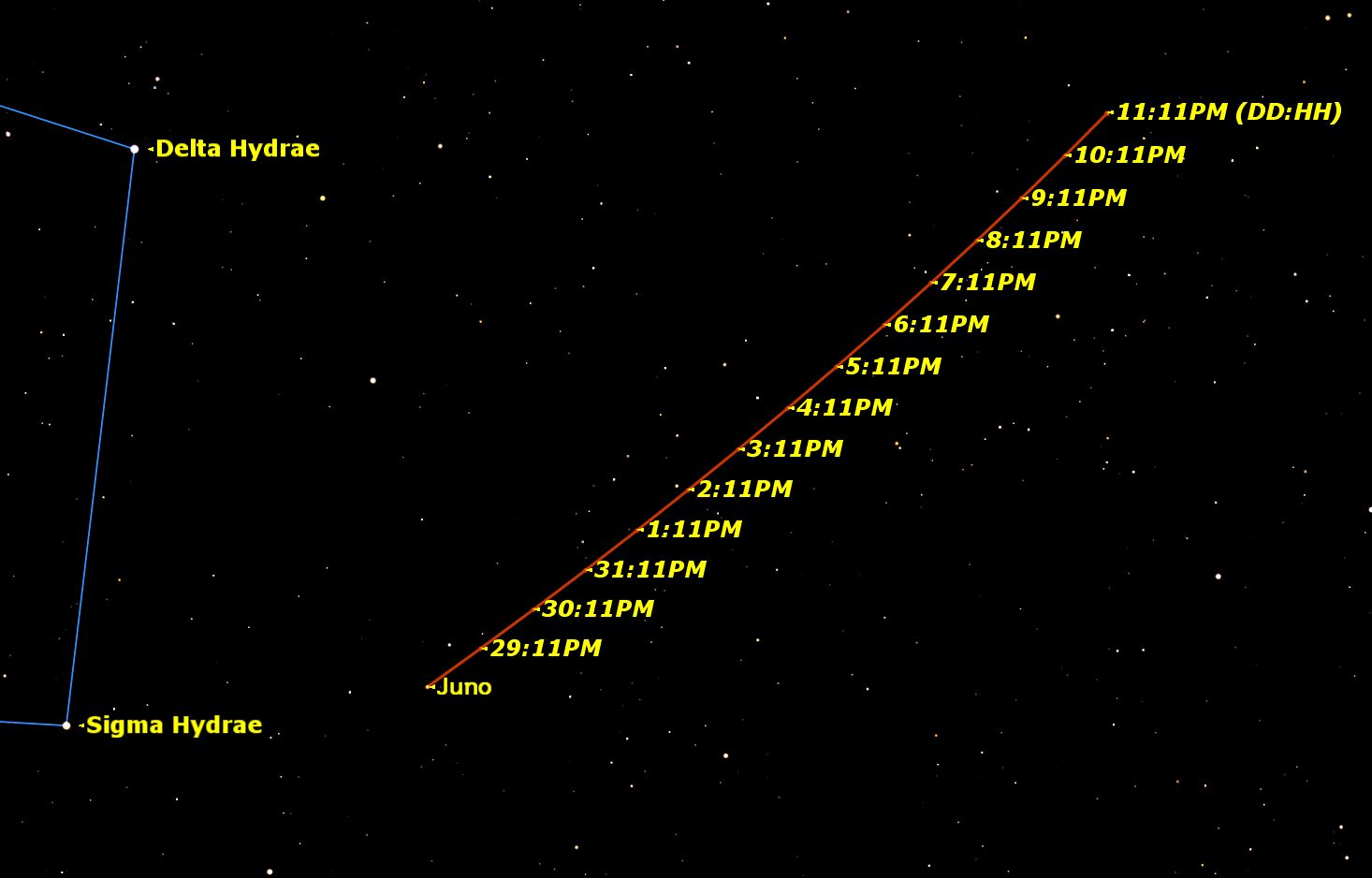How to See Asteroid Juno in the Night Sky with Binoculars

Have you ever seen an asteroid? An asteroid is a small rock in space, smaller than a planet yet larger than a meteoroid, the rocks which cause meteors to flash across the night sky.
While we know of millions of asteroids today, they were totally unknown to astronomers until 17th century astronomer Giuseppe Piazzi spotted Ceres, the largest and first known asteroid, in the early hours of New Year's Day in 1801. Over the next six years, three more asteroids were discovered, but it would be another 38 years before another would be found. It wasn't until photography began to be used for astronomy that the huge number of these tiny bodies became clear.
This week, third asteroid ever to be discovered will be well placed for observation. This is Juno, discovered in 1804 by German astronomer Karl L. Harding. Juno is quite a small body, measuring only 170 miles (274 kilometers) across. To give you some idea of scale, Juno is large enough to fit in between the cities of New York and Boston. [Asteroid Quiz: A Space Rock Challenge]
Juno is quite a small object, and it is also quite far away. Currently, the asteroid is about 128 million miles (200 million km) from Earth. Juno's brightness is rated at a magnitude 7.8 on the scale used by astronomers to measure how bright an object in space is. That means it is beyond the ability of the unaided eye, so you will need binoculars to see it.
Fortunately, there are some brighter guides to spotting Juno. The asteroid can currently be found about halfway between the bright planet Jupiter (now visible in the constellation Leo) and the bright star Procyon in the constellation Canis Minor. Juno is also very close to the "head"of the constellation Hydra, the Sea Snake.

With binoculars, use Jupiter and Procyon to put you in the area of the head of Hydra, a quite obvious pentagon of 4th magnitude stars. Then use the detailed chart to pinpoint Juno's location with respect to Delta and Sigma Hydrae on the night you are observing.
Notice that Juno is moving quite rapidly across the sky. In fact, if you observe it for more than a few minutes with a telescope you can actually see it move against the background stars.
Get the Space.com Newsletter
Breaking space news, the latest updates on rocket launches, skywatching events and more!
This article was provided to SPACE.com by Simulation Curriculum, the leader in space science curriculum solutions and the makers of Starry Night and SkySafari. Follow Starry Night on Twitter @StarryNightEdu. Follow us @Spacedotcom, Facebook and Google+. Original article on Space.com.
Join our Space Forums to keep talking space on the latest missions, night sky and more! And if you have a news tip, correction or comment, let us know at: community@space.com.

Geoff Gaherty was Space.com's Night Sky columnist and in partnership with Starry Night software and a dedicated amateur astronomer who sought to share the wonders of the night sky with the world. Based in Canada, Geoff studied mathematics and physics at McGill University and earned a Ph.D. in anthropology from the University of Toronto, all while pursuing a passion for the night sky and serving as an astronomy communicator. He credited a partial solar eclipse observed in 1946 (at age 5) and his 1957 sighting of the Comet Arend-Roland as a teenager for sparking his interest in amateur astronomy. In 2008, Geoff won the Chant Medal from the Royal Astronomical Society of Canada, an award given to a Canadian amateur astronomer in recognition of their lifetime achievements. Sadly, Geoff passed away July 7, 2016 due to complications from a kidney transplant, but his legacy continues at Starry Night.










